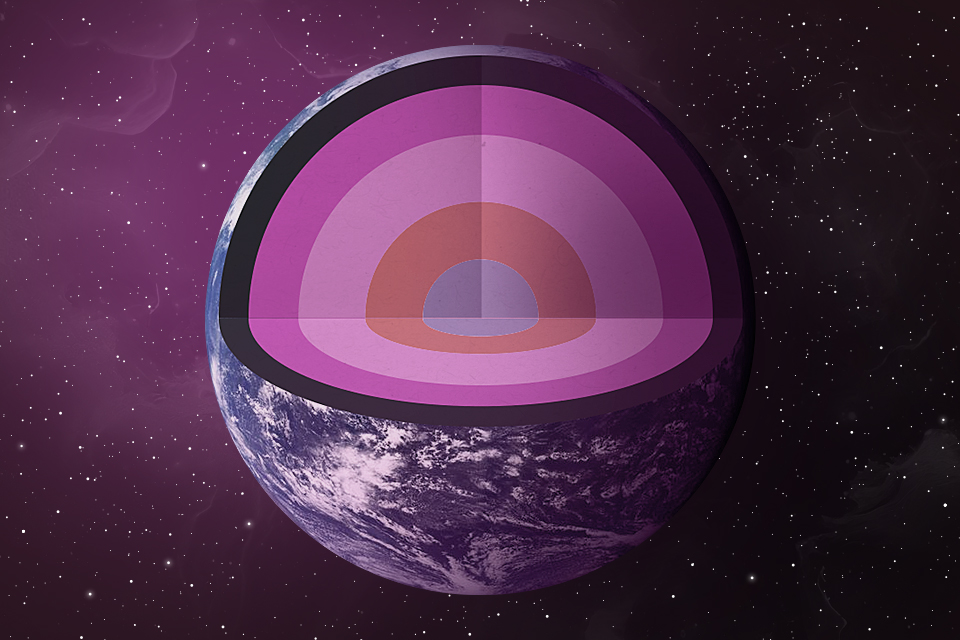Earth is a planet of the Solar System, on the surface of which we all live. Not a single person has descended into its depths for more than a few kilometers and has not seen what is in its center. However, scientists can tell you how its core is arranged, where earthquakes and the magnetic field come from.

1. What is the core of the Earth?
The Earth has an average diameter of 12,742 km. In its center there is a core with a diameter of 3,500 km. Compared to the Earth’s surface, its core is very hot and has a much higher density. Scientists have made such conclusions based on the total mass of our planet. They calculated its average density and it turned out to be much higher than this indicator for the lithosphere.
This means that the density of the Earth’s core can reach 12,500 kg/m3. At the same time, it consists of two parts. The inner one is solid and more dense. It has a diameter of 2,440 km and is solid. There is a liquid outer core around it. Scientists believe that both parts consist mainly of nickel and iron.
2. Where does the magnetic field come from?
It is generally accepted that the Earth’s core is the source of the planet’s magnetic field. More precisely, the inner core is mainly responsible for this. As already mentioned, it is solid, consists of metals that conduct electric current and has a charge.
The inner core of the Earth rotates at a slightly different speed than the planet itself. As a result, a complex interaction with the outer core arises, generating electric currents and, as a result, creating a magnetic field, which we fix with a compass.
3. What is the temperature in the center of the Earth?
As you move away from the Earth’s surface, not only the density increases, but also the temperature. Already at a depth of several tens of kilometers, the material is in a molten state. In the core of the Earth, the temperature can reach 5960 °C
This is almost as much as on the surface of the Sun. However, this does not mean that our planet is actually as hot as the star it orbits around. The depths of the latter are much hotter. The temperature there can reach millions of degrees.
4. What is the Earth’s mantle?
There is a layer called the mantle between the outer core and the crust of the planet. It accounts for the largest share of the mass of our planet. The substance in it is in a molten, but extremely viscous state. That is, it can flow, but it does this extremely slowly.
The Earth’s mantle is predominantly composed of magnesium and silicon oxides. Also, there are quite a lot of iron and aluminum oxides in it. It is separated from the crust by the Mohorovichich surface. Sometimes the mantle material comes close to the surface, liquefies, dissolved gases are released from it, and eventually all this can end in an explosive release of materials to the surface, which we call a volcanic eruption.
5. Where do earthquakes occur?
Strangely enough, the Earth’s core has nothing to do with earthquakes. Most of them are caused by the movement of lithospheric plates. This is the layer of the lithosphere that is above the mantle. It is the collision of its pieces floating on the Mohorovichich surface that causes many of the most destructive tectonic phenomena.
However, the movement of lithospheric plates itself may be associated with processes that occur much deeper. Scientists claim that there are hot streams in the earth’s mantle, which are called plumes. If such a one approaches the surface of the ground, then it can begin not only to melt the tectonic plate, but also to push it in a certain direction.


